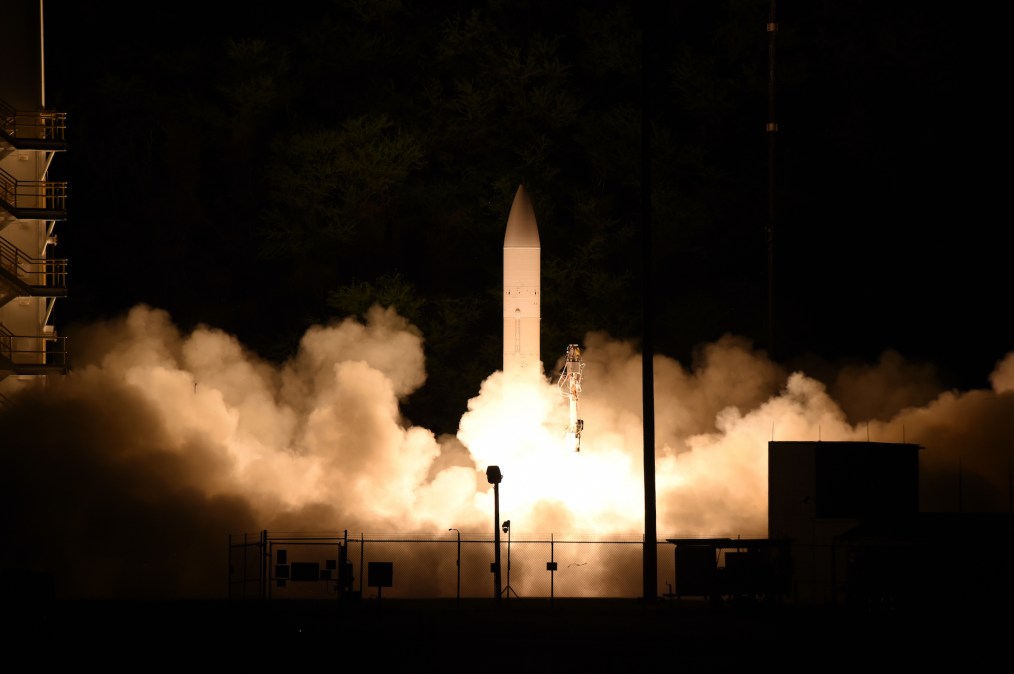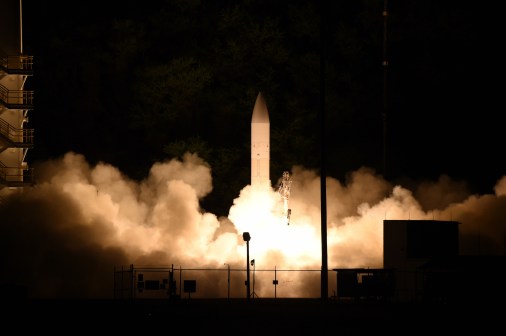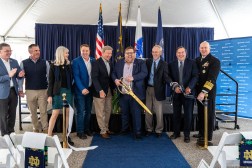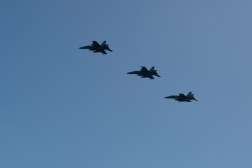Pentagon announces another major contracting action for hypersonic weapons

Lockheed Martin has been awarded a $1.18 billion contract modification for the Navy’s Conventional Prompt Strike program, the latest in a series of awards issued by the Department of Defense as part of a wide-ranging campaign to acquire hypersonic missiles to keep pace with China.
The cost-plus-incentive-fee and cost-plus-fixed-fee contract modification to a previously awarded unpriced letter contract calls for Lockheed to provide program management, engineering development, systems integration, long lead material, and special tooling and equipment in support of missile production, according to a Feb. 17 DOD contract announcement.
If all contract options are exercised, it would be worth up to $2.22 billion.
Under the terms of the deal, Lockheed is expected to provide launcher systems, weapon control, all-up rounds, and platform integration support, the contractor said in a Feb. 17 press release.
“Lockheed Martin continues to advance hypersonic strike capability for the United States through this new contract,” Steve Layne, vice president of hypersonic strike weapon systems at the company, said in a statement. “Early design work is already underway. Our team looks forward to supporting the warfighter by providing more options to further protect America at sea.”
Lockheed is the prime contractor for the CPS effort, and Northrop Grumman and General Dynamics Mission Systems are also involved as subcontractors.
The Navy hopes to integrate the CPS weapon system — a boost-glide capability that will use a rocket to achieve hypersonic speeds — into a stealthy DDG-1000 Zumwalt-class destroyer by the end of 2025. Plans also call for integrating it into Virginia-class submarines before the end of this decade.
Lockheed said its team of contractors is “on track” to provide the destroyer-launched variant “by the mid-2020s.”
At the SNA symposium last month, DefenseScoop asked Navy Secretary Carlos Del Toro if he was confident that hypersonic weapons will be ready to be deployed on Zumwalts and Virginia-class boats by the target dates.
“What I am confident of, is that I’m going to put as much resources and much attention, as much intellectual capacity in terms of my management team, and work … as closely with industry as we can to make that a priority and a reality. Now, if we have technical challenges that develop along the way, we’ll deal with those. But what I do know is that if we put the right talent, we put the right resources into it, hopefully, we will get there [on the Zumwalts] by 2025 or shortly afterwards. But this is a major priority for the Department of the Navy, and I am completely focused along with the CNO on making this happen,” he said.
The Navy is also looking at air-launched hypersonic missiles as “a potential option” for the future,” but “not in real concrete terms right now,” he told DefenseScoop. “[What] we are looking at basically, most immediately, is getting CPS to function on the Zumwalt-class destroyers and as a follow-on, on the submarines as well.”
The new CPS award is just the latest in a series of major deals and activities by the Pentagon for hypersonics technology. These types of missiles are highly sought by the United States and other major powers because they can fly faster than Mach 5, be highly maneuverable against enemy air defenses and quickly attack time-sensitive targets.
In September, the Air Force awarded Raytheon Missiles and Defense a $985 million contract to develop an air-launched Hypersonic Attack Cruise Missile (HACM).
In December, the Air Force Research Lab announced that it awarded a $334 million IDIQ research-and-development contract to Leidos for its Mayhem project. The program calls for developing a multi-mission hypersonic platform that can conduct intelligence, surveillance and reconnaissance (ISR) and strike missions, according to Leidos.
The Air Force in December also announced that it conducted its first successful “all-up-round” flight test of a prototype operational Air-launched Rapid Response Weapon, a boost-glide system that Lockheed Martin has been working on as part of a rapid prototyping program. Lockheed has been awarded nearly $1 billion for the ARRW program.
The CPS contract modification announced on Feb. 17 also provides for additional all-up rounds as well as canisters for the Army’s Long Range Hypersonic Weapon (LRHW) “testing, training and tactical employment,” according to Lockheed.
The Navy and Army are pursuing a common glide body for their hypersonic missiles.
In October, the Navy office for Strategic Systems Programs and the Army Hypersonic Project Office successfully conducted the second High Operational Tempo for Hypersonics flight campaign from NASA’s Wallops Flight Facility, which will inform the development of CPS and LRHW, according to the Defense Department.
Officials called the test “a vital step in the development of a Navy-designed common hypersonic missile, consisting of a Common Hypersonic Glide Body (CHGB) and booster, which will be fielded by both the Navy and Army with individual weapon systems and launchers tailored for launch from sea or land.”
The Army is aiming to field the ground-launched Long-Range Hypersonic Weapon by the end of fiscal 2023.






